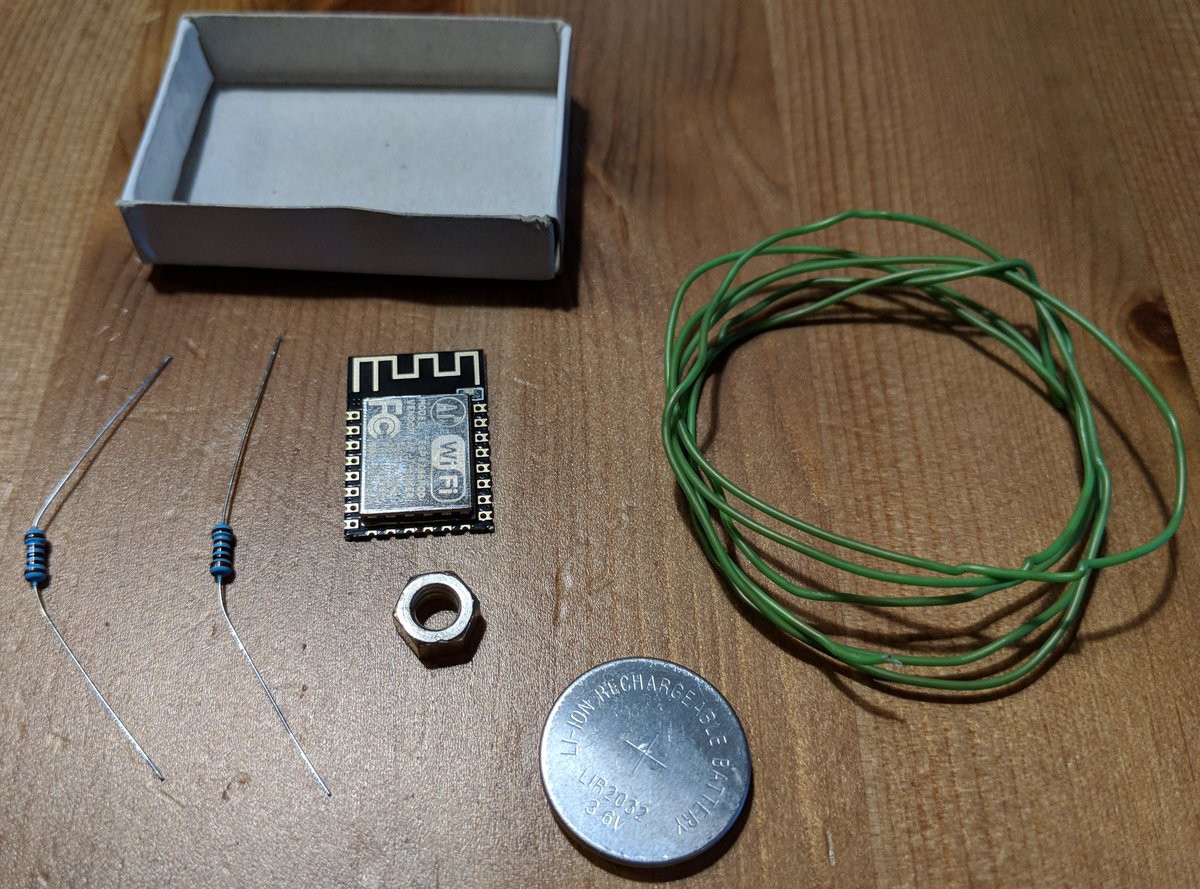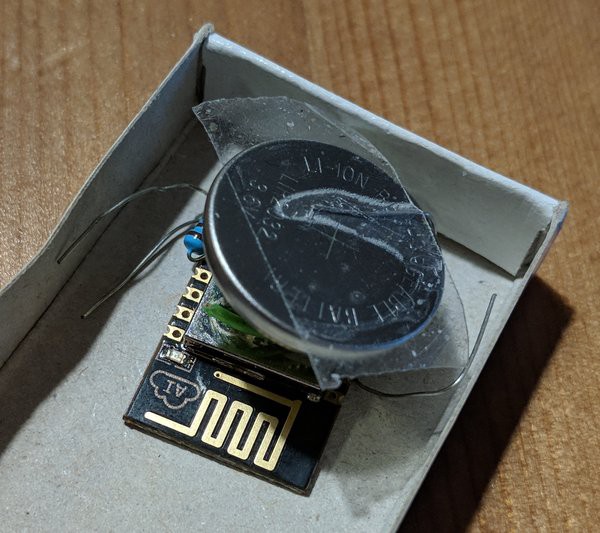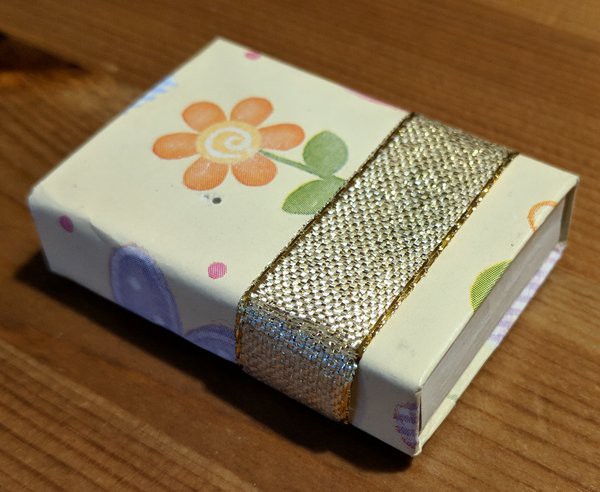I started out wanting to build a simple dash-button that I can push that would ring my phone so I could easily locate it. I designed a transistor circuit to turn on the ESP and make sure it keeps turned on until its done doing its thing and then powers off automatically. Needless to say, it got a bit complicated relatively quickly.
Then I realized, I can have this much simpler. Instead of a complex circuit, I can reduce this to essentially only the ESP: The battery is separated from the device using a self-made spring. When pushing it, it directly powers the ESP which is still happy with 3.7V or even 4.2V, so I don’t even need a voltage regulator. The ESP does its thing, and uses its LED to signal when its done, so I can stop pushing the battery down. It’s slightly crude, but the simplicity is overwhelming.
Here’s a picture of the components I needed:

Assembled it looks like this:


Finally, some gift-wrapping utensils make it look pretty:

 Hagen Fritsch
Hagen Fritsch




 foamyguy
foamyguy
 facelessloser
facelessloser
 Chris Jones
Chris Jones
 Robin Hartley
Robin Hartley